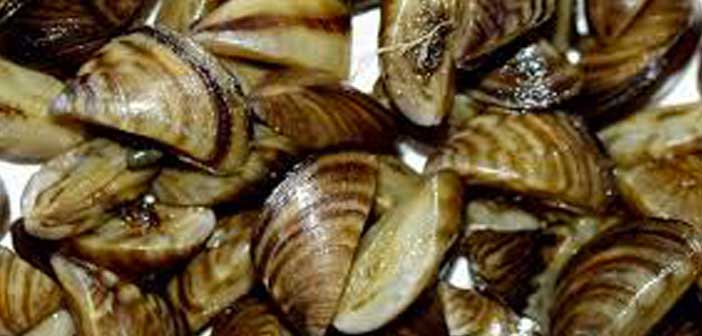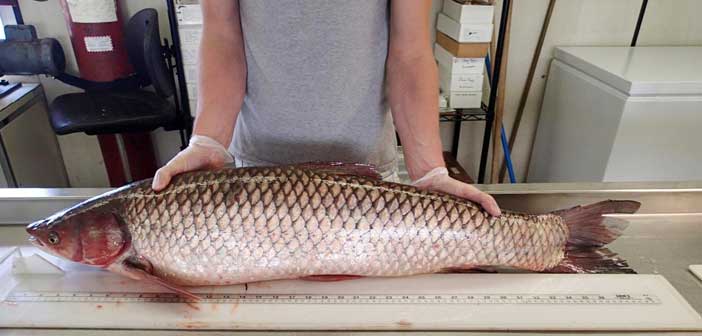MANITOULIN––Hello, my name is Eric Labelle I am currently hired through the Ontario Federation of Anglers and Hunters (OFAH), as an invasive species awareness liaison for Manitoulin Island and working in partnership with the Manitoulin Streams Improvement Association and Manitoulin Area Stewardship Council (MASC).
I am a Fleming College graduate having taken both the (OAS) Outdoor Adventure Skills and (ERT) Earth Resource Technician programs and am currently returning to achieve my (ET) Environmental Technician diploma. I enjoy hiking, canoeing, fishing and basically all outdoor pursuits. Having grown up on Manitoulin, I realize the importance in preserving our natural environment from invading species not only for this generation but for all of the generations to come.
As part of the OFAH’s Invading Species Hit Squad on Manitoulin, it will be my main prerogative to facilitate the awareness of invading species across Manitoulin Island as well as informing the public on steps to take in order to mitigate the further reproduction and spread of these species.
Invading Species are classified as an aquatic or terrestrial species which is not native to an area, usually introduced knowingly or unknowingly by human efforts, and which have a detrimental effect on the environment, economy, society and sometimes health.
Species such as our well-known zebra mussel is a damaging invader. Native to Eurasia, they were introduced through the transfer of ballast waters and on ship hulls in the years following the opening of the Saint Lawrence Seaway for shipping. Zebra mussels were first introduced in our Great Lakes through Lake Erie and quickly spread to the rest of the Great Lakes as well as to a number of inland lakes. This invading mussel creates an inhospitable environment for fish by removing particles from the water column. The zebra mussels process up to one gallon of water per day, per mussel. Some particles are consumed as food, and feces are deposited on the lake floor. Non-food particles are combined with mucus and other matter and deposited on lake floors as pseudo feces. This improved water clarity and allows sunlight to penetrate deeper, enabling growth of macrophyte bacteria. These bacteria, when decaying, wash up on shorelines, fouling beaches and causing water quality problems and have caused millions of dollars in property damages.
The spread of this and many other aquatic invasive species can be prevented from causing further harm. Full time and seasonal residents of Manitoulin should, for instance, make sure to bilge and drain all water from their boats before leaving the water body and clean their watercrafts properly before leaving the area. Ideally, one should leave their watercraft to dry in the sun for five days before proceeding to another water body.
Giant hogweed is another invader that has been making its way across Manitoulin. This terrestrial invasive species contains photosensitizing furanocoumarins, synonymous with that of our native cow parsnip. When this comes into contact with skin, it can cause phytophotodermatitis, a hypersensitivity to sunlight, which can cause a serious skin inflammation not unlike our native poison ivy.
These are just a few of the of Manitoulin’s invading species, however others such as the rusty crayfish, sea lamprey, emerald ash borer, round goby, phragmites, purple loosestrife, garlic mustard and more are doing their part in the degradation of habitat and ecosystems of Manitoulin Island. Thus, as an Island community, we can do our part in the preservation of our ecosystems by awareness and prevention.
Early Detection and Distribution Mapping System (EDDMaps) or (www.eddmaps.org) is a public website (and now app) that Manitoulin residents and anyone in Ontario can access in order to aid in the tracking of invasive species in their area. This system works by easily creating an account in just a few steps. Afterwards, one simply needs to choose the invading specie they believe to have found and input the quantity, location and a corresponding photo as well as some other relevant information. All entries in this data base are screened in the event that one species is confused with another however I encourage everyone to attempt to use this invasive species tracking tool and start being part of the census .
I will be working out of the Manitoulin Streams office in Manitowaning and can be contacted by phone at 705-859-1653 or by email at eric_labelle@ofah.org. If anyone has any questions regarding invasive species, EDDMaps, or would like a presentation at their event, please don’t hesitate to call. If you want to report Invasive species, you can also call the Invasive Species HOTLINE at 1-800-563-7711.





